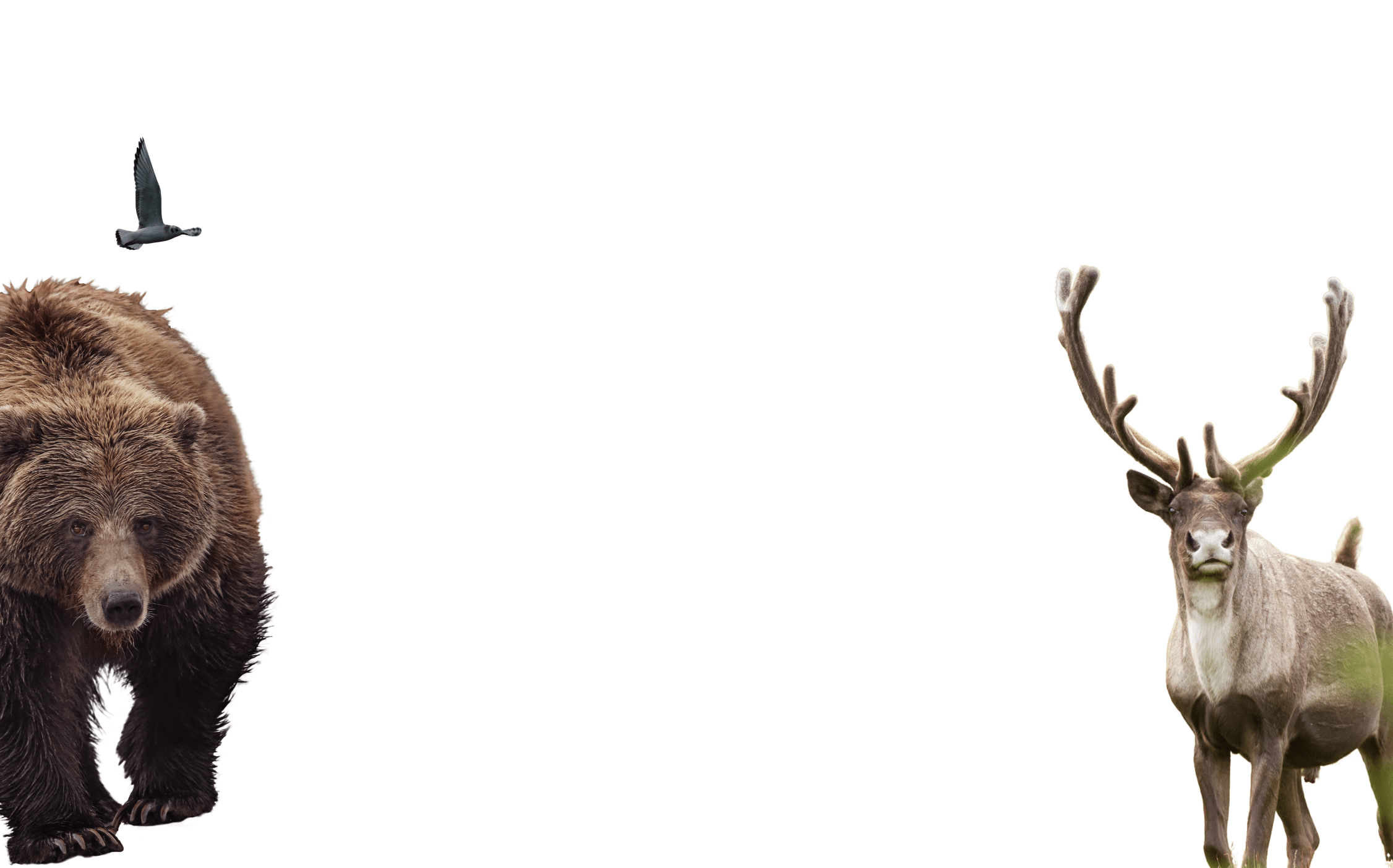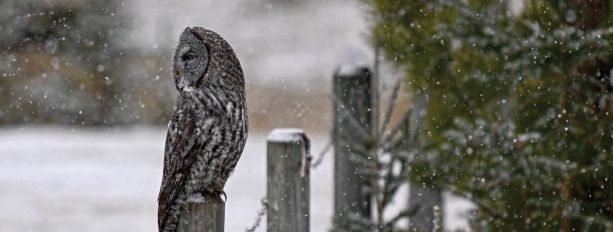
AWA Turns 60 – The mighty great gray owl
January 27, 2025
- •
- •
- •
The Great Gray Owl has been a symbol for Alberta Wilderness Association (AWA) for nearly the entire history of the organization.

A Great Gray Owl poses in central Alberta. The photographer notes it’s important not to reveal specific locations of owls for their protection. Photo © K. Fahrlander
By Amy Tucker
Read the PDF version here.
This article was first published by Nature Canada in its November blog.
In the Discovery Channel version of the Great Gray Owl, you’d see the predatory bird swooping soundlessly through an opening in a mountain forest. It would dip low, and glide on broad wings, spanning four to five feet, searching for its favourite dining option — voles, a small rodent.
You would see its gray plumage, with flecks of white and brown. As it closes on its prey, you might be stunned to see this owl’s furry feet look more like a kitten’s paws than predatory birds’ talons. Its round, pale yellow eyes, set in a round face with concentric circles — almost like tree rings — would shine back at you.
But in reality, and to the dismay of many birders, many people will never actually see one of these owls in real life. This is because the bird is elusive: we don’t have much information about their numbers in the wild, and thus they are considered “data deficient” by the federal government.
They don’t tend to go where people are and you also won’t likely see them flock overhead as the leaves turn or the trees bud. These birds aren’t known to migrate far; they typically breed and winter in the same area within Canada. The federal government says the bird has a general nesting period that starts sometime between mid-March and mid-April and ends around late June to early July, depending on the region. Their populations can change dramatically depending on the cyclic population of voles, according to federal data.
Though in Canada, Great Grays tend to live in dense, wet evergreen forests of the far north, also known as taiga, your best bet to see them is when they travel south in search of food during an irruptive year, where small mammal population numbers are low in the north. Otherwise, these owls will hunt in northern meadows, bogs, or other open areas with the odd few trees. Forest harvest is the largest human impact on their populations, as the removal of perch and nest trees reduces breeding habitat quality.
Strength of the Gray
At first glance, Great Grays appear large for an owl — between the size of a crow and Canada goose — but they only weigh between 1.5 to 3.75 pounds. Other owls such as Snowy owls and Great Horned Owls are typically heavier.
That said, Great Gray Owls are powerful. Despite weighing less than a cantaloupe, they have been known to break through hard packed snow while on the hunt for prey. According to Cornell Lab’s All About Birds website, one Great Gray broke through snow that was hard enough to support a 176-pound human. They average a lifespan of about seven years in the wild. However, the oldest recorded Great Gray Owl lived in Alberta and was nearly 19 years old when it was found in 2013, after being hit by a car.
A symbol of wildness
The Great Gray Owl has been a symbol for Alberta Wilderness Association (AWA) for nearly the entire history of the organization.
Since 1965, AWA has been advocating for the protection of wilderness and wildlife in the province. We fight for habitat protection across the land, from the northern forests where Great Gray Owls live to the mountain slopes and the windswept prairies. We fight against clearcutting and logging of boreal forest, one of the greatest threats to Great Gray Owls, as well as oil and gas development and mining which are fragmenting our lands. We argue for the conservation of sensitive ecosystems which, once lost, are difficult to regain. And, through our work, we aim to help Albertans understand the value of wild spaces and wildlife, like the beautiful and elusive Great Gray.
The owl was once used as a logo on AWA’s earlier newsletters before the 1990s. The logo evolved over time, and eventually by December 1997 it took its current shape. As AWA progressed and created its own annual awards night, the owl was named “ERNIE,” which was an acronym to describe the purpose of the awards. The name never stuck; however, AWA continues to present the Great Gray Owl award each November to outstanding devotion and effort by volunteers. Like the Great Gray Owl, with unending patience and dedication to purpose, these individuals work in quiet wisdom to conserve wilderness habitat and wild creatures.
The Great Gray embodies wildness, power and beauty. As AWA heads into its 60th year, the Great Gray Owl will continue to represent our fierce defence of wild places.